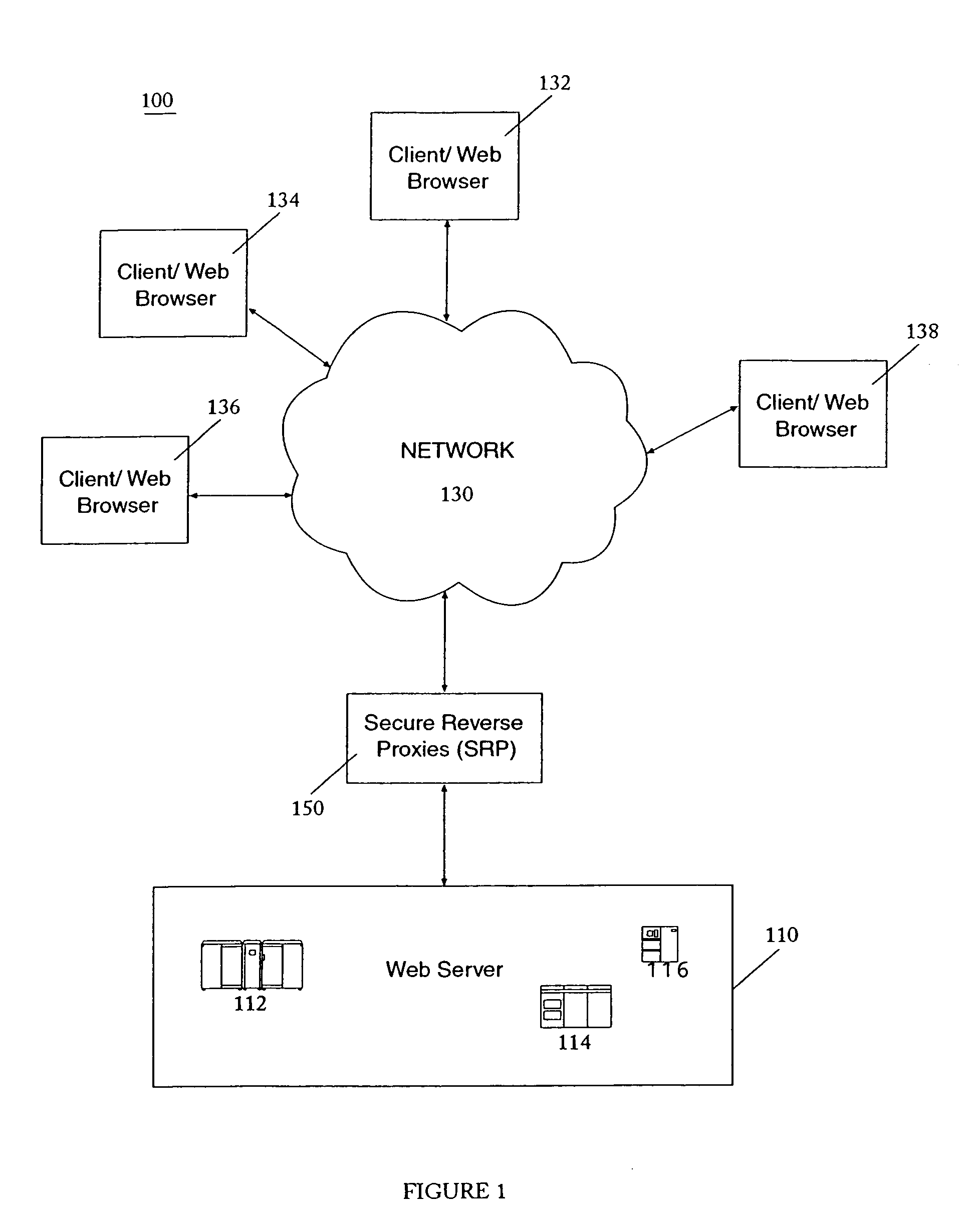Method and system for caching secure web content
- Summary
- Abstract
- Description
- Claims
- Application Information
AI Technical Summary
Benefits of technology
Problems solved by technology
Method used
Image
Examples
Embodiment Construction
[0016]A method and system are provided for secure reverse proxies capable of caching secure content. These Secure Reverse Proxies (“SRP”) are, in one embodiment, installed logically between the web server and the connection to the outside world with all incoming secure requests being first sent to the SRP rather than directly to the server.
[0017]Normally, a request to establish a secure connection is received by the server from a web browser. In one embodiment the request message, such as a request to establish a TLS session, is referred to as a client hello and is directed to the SRP instead of the server. The SRP responds to the request by sending back a TLS server hello message containing the server certificate. After performing the TLS key exchange protocol the SRP and the requesting browser share a secret encryption key and a secret integrity key. These keys are used to protect the rest of the session and are appropriately called session keys.
[0018]With a TLS session establishe...
PUM
 Login to View More
Login to View More Abstract
Description
Claims
Application Information
 Login to View More
Login to View More - R&D
- Intellectual Property
- Life Sciences
- Materials
- Tech Scout
- Unparalleled Data Quality
- Higher Quality Content
- 60% Fewer Hallucinations
Browse by: Latest US Patents, China's latest patents, Technical Efficacy Thesaurus, Application Domain, Technology Topic, Popular Technical Reports.
© 2025 PatSnap. All rights reserved.Legal|Privacy policy|Modern Slavery Act Transparency Statement|Sitemap|About US| Contact US: help@patsnap.com



